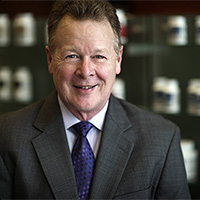by Jim Paoletti, B.S. Pharmacy, FAARFM, FIACP
Hormones can be administered effectively through a variety of dosage forms including:
- Oral Slow Release Capsules
- Sublingual/Buccal Troches
- Topical Creams or Gels
- IM Injections
- Pellet Implants
Patient compliance is truly one of the most important factors in determining the route of administration for an individual. The dosage form has to be acceptable to the patient, or poor compliance may result.
Each dosage form has its advantages and disadvantages, as well as times it should be used and avoided.
Oral Capsules
Oral capsules for hormones should almost always be compounded in a slow-release preparation to decrease stomach acid degradation of the hormone and extend duration of action.
One exception is if the patient has significant inflammation in their gut, as with a food sensitivity and/or autoimmune reaction. Inflammation can interfere with the breakdown of the hydroxypropyl methylcellulose (HPMC) used in slow release capsules, thereby decreasing absorption of the active ingredients.
Estrogen should never be administered orally. Oral administration of estradiol results in a high level of estrone if normal physiologic levels of estradiol are reached. Additionally, oral estrogen increases SHBG, TBG, and the risk of cardiovascular events. Estrogen is much safer if administered in a topical cream or sublingual troche.
Progesterone administration as a slow release oral capsule is advantageous in two instances. First, one of the metabolites produced from oral administration, 4-allo-prenenolone, is a GABA receptor agonist and has a calming effect which can help improve poor sleep. Secondly, when trying to regulate a peri-menopausal woman with irregular cycles, because oral progesterone dissipates much more quickly that topical progesterone, it is easier to time the drop in progesterone at the end of the cycle to coincide with the endogenous drop in estrogen and thereby initiate the cycle.
Oral testosterone can be used in females because of the low doses used, however, it can increase estrogen levels significantly in some women. Oral testosterone should be avoided in males.
Sublingual or buccal administration works well for all hormones. Most hormone doses will work in a “mini-troche” which is small enough to dissolve in 5-10 minutes.
- Sublingual estrogen should be administered 3 times a day.
- Sublingual progesterone and testosterone should be also based on pharmacokinetics, but in clinical practice twice a day dosing is often used.
IM Injections
IM injections are most commonly used for testosterone replacement in males, which is administered once every week or two. The disadvantage of this route is it provides higher levels the first few days as compared to the end of the dosing interval. The early peaks contribute to more metabolites, including estrogens, which can be an issue in some patients.
Pellet Implants
Pellet implants are used for estradiol and testosterone administration, and are usually inserted every 4 to 6 months. As with IM injections, higher levels can result soon after insertion as compared to the end of the dosing interval. In addition, there is no flexibility in dosing adjustment until the end of the interval unless another minor surgery to remove the pellet is done.
If a patient wants pellet therapy, I establish the amount of the hormones needed for proper balance and physiologic levels by a different route of administration and then convert to pellet therapy. This approach allows for time to address factors affecting the function of the sex steroids, including adrenal and thyroid function, insulin resistance, and lifestyle factors including nutrition, while determining the appropriate doses of hormones.
Ongoing Testing
Once hormones are administered, monitor levels using saliva or capillary blood spot testing.
- For sublingual or buccal administrating use capillary blood.
- For topical hormone administration there is one important caution: contamination of the saliva sample can easily occur if the patient is using their hands to apply their cream or gel.
Related: Hormone Testing – Best Practices & Clinical Considerations – WEBINAR RECORDING
 Jim Paoletti, BS Pharmacy, FAARFM, FIACP, is the Director of Education at Power2Practice and a Clinical Consultant with over 30 years of experience creating and using bio-identical hormone therapies in both retail pharmacy and clinical practice.
Jim Paoletti, BS Pharmacy, FAARFM, FIACP, is the Director of Education at Power2Practice and a Clinical Consultant with over 30 years of experience creating and using bio-identical hormone therapies in both retail pharmacy and clinical practice.
Jim is a nationally recognized expert in pharmacy, BHRT and custom compounding, and has previously served as Director of Provider Education for ZRT Laboratory and Education Director for the Professional Compounding Centers of America.

